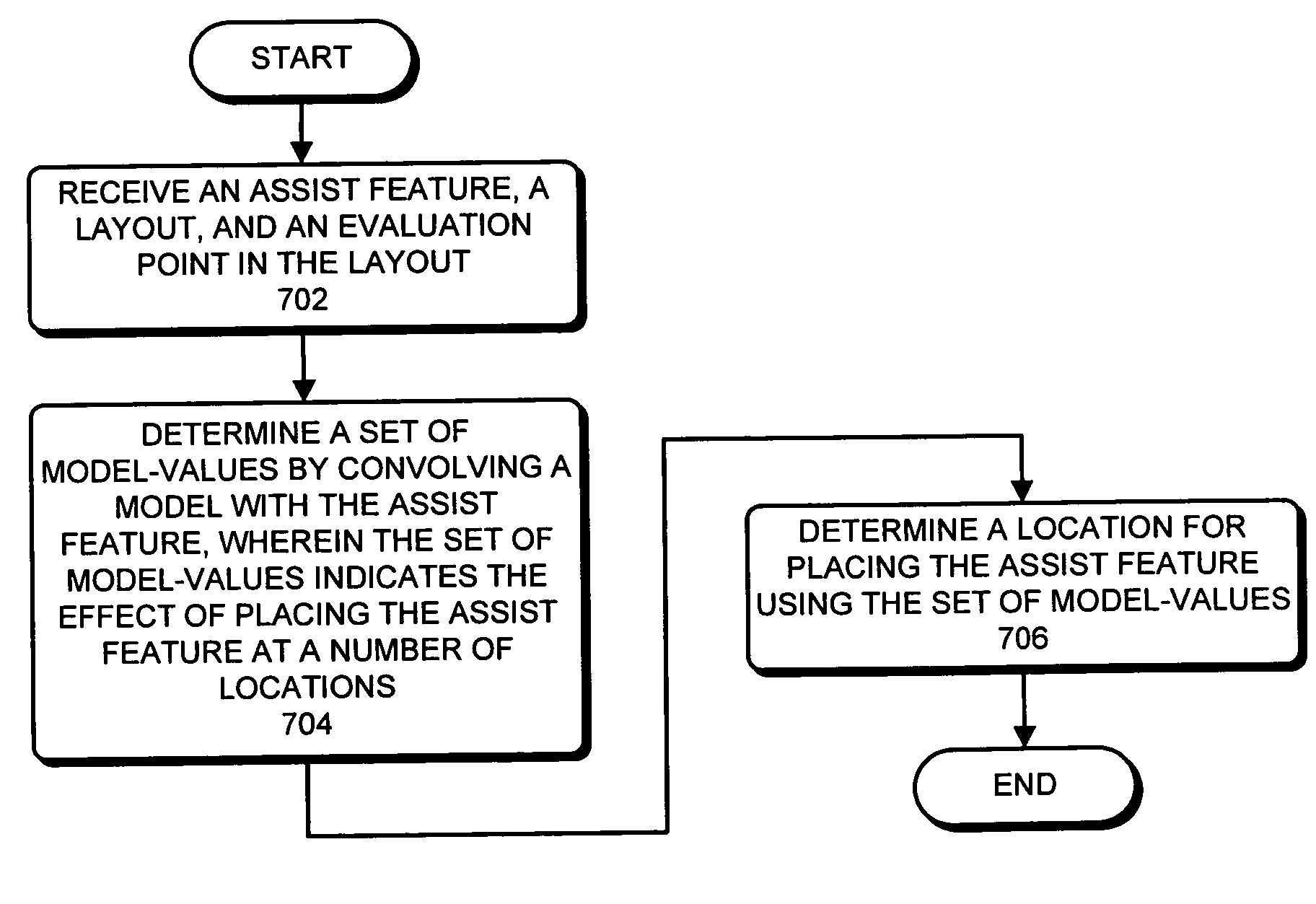Method and apparatus for quickly determining the effect of placing an assist feature at a location in a layout
a technology of assist feature and layout, applied in the field of semiconductor manufacturing, can solve the problems of inability to find exact formulae to predict, missed or suboptimal placement and/or cleanup of assist features, and the complexity of such rules increases rapidly, so as to quickly determine the effect of placing assist features, reduce the amount of computation, and reduce the effect of complexity
- Summary
- Abstract
- Description
- Claims
- Application Information
AI Technical Summary
Benefits of technology
Problems solved by technology
Method used
Image
Examples
Embodiment Construction
Integrated Circuit Design Flow
[0027]FIG. 1 illustrates various steps in the design and fabrication of an integrated circuit in accordance with an embodiment of the present invention.
[0028] The process starts with the product idea (step 100) which is realized using an EDA software design process (step 110). When the design is finalized, it can be taped-out (event 140). After tape out, the fabrication process (step 150) and packaging and assembly processes (step 160) are performed which ultimately result in finished chips (result 170).
[0029] The EDA software design process (step 110), in turn, comprises steps 112-130, which are described below. Note that the design flow description is for illustration purposes only. This description is not meant to limit the present invention. For example, an actual integrated circuit design may require the designer to perform the design steps in a different sequence than the sequence described below. The following discussion provides further deta...
PUM
 Login to View More
Login to View More Abstract
Description
Claims
Application Information
 Login to View More
Login to View More - R&D
- Intellectual Property
- Life Sciences
- Materials
- Tech Scout
- Unparalleled Data Quality
- Higher Quality Content
- 60% Fewer Hallucinations
Browse by: Latest US Patents, China's latest patents, Technical Efficacy Thesaurus, Application Domain, Technology Topic, Popular Technical Reports.
© 2025 PatSnap. All rights reserved.Legal|Privacy policy|Modern Slavery Act Transparency Statement|Sitemap|About US| Contact US: help@patsnap.com



